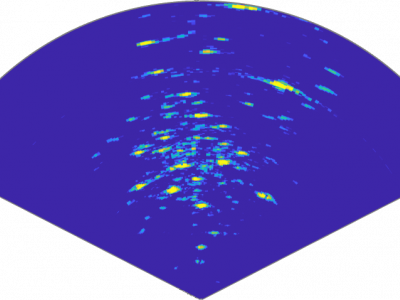Sensors
The significance of having sustainable water quality data cannot be overstated. It plays a crucial role in comprehending the historical variations and patterns in river conditions and also helps in understanding how industrial waste impacts the well-being of aquatic ecosystems. To achieve sustainable water management practices, it is imperative to rely on dependable and extensive data. Therefore, accurate monitoring and assessment of various water quality parameters become essential.
- Categories:
 1225 Views
1225 Views
In this paper, we propose and numerically characterize the optical characteristics of a dual eccentric-core D-shaped photonic crystal fiber surface plasmon resonance refractive index sensor. The dual eccentric-core structure can leak more power to plasma film to excite SPR phenomenon than conventional structures. We investigate the influences induce by diameter of air holes, distance between air holes and thickness of gold film. The results show that our sensor has the wavelength sensitivities of 44,000 nm/RIU for odd mode and 39,000 nm/RIU for even mode.
- Categories:
 26 Views
26 Views
This dataset contains data collected from multiple paths, such as Unequally space path, Curved path, ESPLB, data collected from actual paths, and concentration prediction data. This experiment adopts a new concentration data collection path ESBLP method efficiently divides the study area into three parts and measures concentration data along the boundaries to calculate gradients.
- Categories:
 46 Views
46 Views
This dataset is made for traditional, machine learning, and deep neural-network-based virtual sensor development and evaluation.
- Categories:
 92 Views
92 Views
This dataset corresponds to the paper Calibration of a Hail-Impact Energy Electroacoustic Sensor, submitted to IEEE Transactions in Instrumentation and Measurement by Florencia Blasina, Andrés Echarri, and Nicolás Pérez.
The dataset corresponds to the voltage signals acquired regarding several steel-ball impacts on the proposed hail-sensor plate to calibrate it.
- Categories:
 88 Views
88 Views
Experimental measurement data was obtained utilizing RCbenchmark 1780 with full-range PWM signals. Measurements were made for two series of setups.
First series is related to low-voltage setups using the following T-MOTOR components: - motors: MN4014 400Kv, MN5212 340Kv, MN501-S 360Kv, U7 280Kv, MN6007 320Kv, P60 340Kv, MN701-S 280Kv; - ESC: Air 40A, Flame 40A, Flame 70A, Alpha 60A, Flame 100A; - propellers: P17×5.8, P18×6.1, P20×6, P22×6.6, P24×7.2, G26×8.5; - battery: 6-cell (6S) Lithium polymer (LiPo).
- Categories:
 165 Views
165 ViewsThis report presents an end-to-end methodology for collecting datasets to recognize handwritten English alphabets in the Indian context by utilizing Inertial Measurement Units (IMUs) and leveraging the diversity present in the Indian writing style. The IMUs are utilized to capture the dynamic movement patterns associated with handwriting, enabling more accurate recognition of alphabets. The Indian context introduces various challenges due to the heterogeneity in writing styles across different regions and languages.
- Categories:
 813 Views
813 Views
This is an indoor environment data set collected from our research team's laboratory, and the data is collected from the Intel RealSense D435i camera. There are a total of 12 datasets, each in the format of a `.bag` file in ROS packet format. Each file contains RGB images and IMU data.
- Categories:
 186 Views
186 ViewsThis dataset consists of Images produced from a Seapix-R multibeam echosounder (MBES) pointed at a fish farming cage. The MBES was attached outside the cage on a mounting bracket with a 45 deg downwards tilt, such that most of the cage was within the vertical beamforming capability of the system, with the exception of a small cake-shaped section near the net, 1.5 meters high, extending 5.5 meters into the cage
- Categories:
 125 Views
125 ViewsUse of medical devices in the magnetic resonance environment is regulated by standards that include the ASTM-F2213 magnetically induced torque. This standard prescribes five tests. However, none can be directly applied to measure very low torques of slender lightweight devices such as needles. Methods: We present a variant of an ASTM torsional spring method that makes a “spring” of 2 strings that suspend the needle by its ends. The magnetically induced torque on the needle causes it to rotate. The strings tilt and lift the needle.
- Categories:
 284 Views
284 Views


